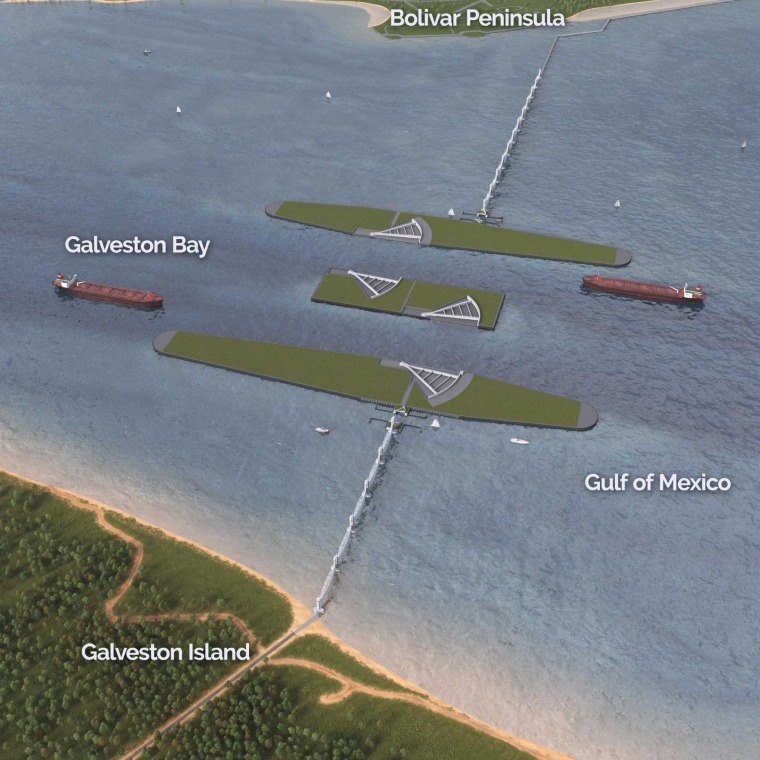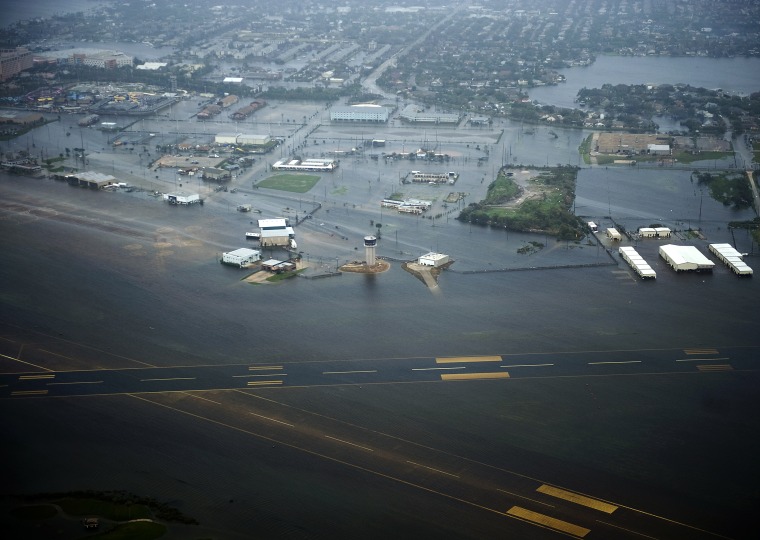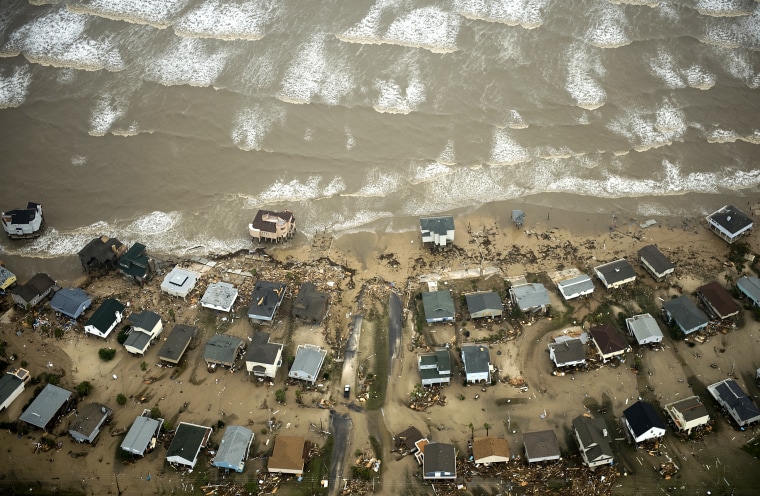HOUSTON — Last August, when initial forecasts projected that Hurricane Laura could slam into the Houston region as a massive Category 4 storm, local emergency response officials panicked.
For years, experts have warned that a direct strike from a storm of that severity could send a 25-foot wall of water up the Houston Ship Channel, unleashing a humanitarian, economic and environmental disaster in a densely populated region that’s also home to the country’s largest concentration of petrochemical facilities. Studies estimate that such a storm could kill thousands, cause $100 billion in damage and result in the loss of 500,000 jobs. One expert has warned that the resulting spills from thousands of chemical and crude oil storage tanks would be “America’s Chernobyl.”
In the end, Hurricane Laura veered east, hitting a less-populated section of the Louisiana coastline instead and sparing Houston. But the near miss led to renewed calls to build a massive coastal barrier system, first proposed more than a decade ago, that would protect the Texas Gulf Coast from disaster. Now, with President Joe Biden pushing a $2.25 trillion infrastructure package, some members of Congress from Texas say it’s time to finally fund the $26 billion coastal barrier project, known informally as the “Ike Dike.”
“What I am talking about now, what Texans have been talking about for a decade, is a plan to prevent a potential human and environmental catastrophe unlike any this country has ever seen,” Rep. Lizzie Fletcher, a Democrat from Houston, said while testifying this month in support of the Ike Dike before the House Committee on Transportation and Infrastructure, of which she is a member.

The project — named for Hurricane Ike, a Category 2 storm that devastated Houston in 2008 — calls for a series of coastal barriers, levees and dunes in the Gulf of Mexico that would work as a buffer, absorbing storm surge from incoming hurricanes and minimizing damage. The Army Corps of Engineers, which has been working with the Texas Land Office to design the project, estimates the coastal wall would save an average of $2.3 billion in storm damages per year.
The White House has said it doesn’t want specific projects written into the infrastructure plan, favoring instead a system of competitive grants to dole out funding. Fletcher said she’s been working to ensure that the package includes significant funding for coastal resilience projects like the Ike Dike. Biden’s initial plan called for $50 billion for resiliency projects to “protect communities and the environment.”
“We know these storms are going to get more frequent and more intense, when that’s what the scientists are telling us is happening as a result of climate change,” Fletcher said in an interview. “And I think the work that we've been doing in Texas to protect from the potential catastrophic impacts is the kind of thing that we're talking about now.”
Philip Bedient, director of Rice University’s storm-studying SSPEED Center in Houston, said investments to protect the Texas coast are long overdue. Hurricane Ike was the warning shot that ignited the effort, but in the 13 years since, Bedient said, “we have not turned a single spade of dirt for a levee construction system.”
“It’s unbelievable,” said Bedient, noting that it would most likely take 10 to 15 years to complete construction of the Ike Dike. “We’re sitting ducks right now.”

Bedient’s group has proposed building a series of levees, sea walls and dunes inside Galveston Bay, a $6 billion project that he says could be completed in five years and provide significant protection until the larger coastal protection system is finished. After dedicating more than a decade to the issue, Bedient said he’s hopeful that these projects are finally getting the support they need.
“I'm encouraged because there's a lot of momentum right now, and there seems to be a lot of interest in getting this done,” Bedient said.
Although Republicans have signaled opposition to the scale of Biden’s infrastructure plan, instead proposing a much smaller $568 billion alternative, Fletcher said she believes there is bipartisan support — at least in Texas — to fund the Ike Dike.
In 2017, Texas Land Commissioner George P. Bush, a Republican, sent a letter to then-President Donald Trump urging him to include funding for the Ike Dike in his long-promised infrastructure package, which never materialized. And in 2018, Sen. John Cornyn, R-Texas, wrote a bill that aimed to expedite the project.

In response to a question about whether Cornyn would support efforts to fund the Ike Dike through an infrastructure package, a spokeswoman from the senator’s office pointed to a 2020 op-ed in which Cornyn pledged to “fight alongside other members of the Texas delegation” to authorize funding for the project.
Republican lawmakers in the Texas Legislature, meanwhile, have been working to create a stream of local funding, such as a regional tax district, to help offset the federal cost of building and maintaining the Ike Dike.
“I've been talking to my colleagues on both sides of the aisle about how we could work together to move it forward,” Fletcher said. “We need to use our voices to talk about why this is important, not just for the Houston region, but for the state of Texas, and for the entire country.”

